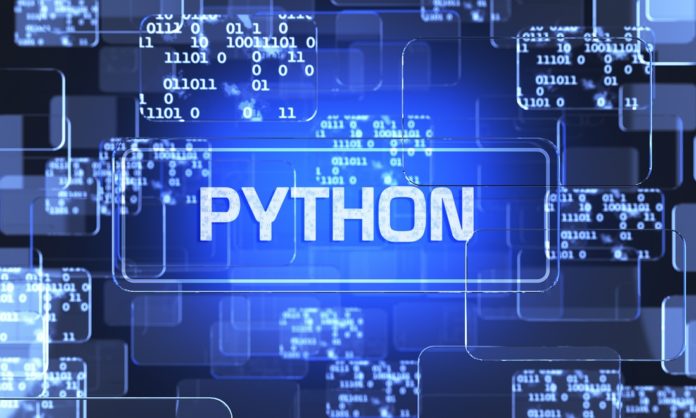Every now and then some kind of technological events is taking place affecting individuals’ life in some way or another. One such event was the rise of Python programming. Though Python is not new and was first arrived in the late 1980s; but over the last decade, Python gained popularity to that extent that now, every programmer shows the fascination of learning Python. For making everyone’s life easy, we have created this exclusive list of best resources to learn Python Programming Language.
This list covers some of the best books ever written for learning Python & online websites having videos for making Python simple to learn even for the newbies.
But like always, before going any further, let’s first have a basic overview of Python programming & what makes it so important for programmers to learn Python.
Today, it’s not any secret that computers rely on programming code to function efficiently and properly. Already there are around 700 existing programming languages including the most famous one JavaScript along with the more important ones like Java or C/C++ programming languages.
However, there are several things that separate Python from JavaScript or any other programming language. It is one of the high-level general-purpose and interpreted languages that are not only easy to learn but also easy to use, powerful and comprehensive.
Moreover, Python also implements a clear exceptional error handling model. If something goes wrong in runtime python developers raise the so-called exception. This is a universal approach applied by all python package developers. Python gives great facility to track where exactly in the code the exception happened and gives a traceback to easily find an actual place in code. The exceptions allow preventing issues with really bad consequences earlier. To understand how to fix certain exceptions you can use special services like FixException or use StackOverflow which can also help with it.
From artificial intelligence to web development to game development, it is used everywhere. Many programmers even prefer Python to use in several domains ranging from healthcare to banking, mostly for AI & Data Science.
Python was created by Guido van Rossum as a dynamic programming language that is widely used over other essential languages like Java, PHP, Perl & Ruby. Often programmers have termed it as a scripting language and it provides support for many programming paradigms, automatic memory management and implementing the basic concept of object-oriented programming or OOP.
Over time, Python language has managed to build a huge community of developers from all over the world and has a huge and broad standard library with thousands of plugins for all your project needs.
Some of the features of Python are:
- It is an open-source programming language.
- Easy and simple to learn and write.
- Very fast.
- Programs are highly readable.
- High-level, scalable and portable language.
- Unique syntax & provides support for many internet protocols like IMAP & FTP.
- Widely used for the development of frameworks like Pyramid & Django.
- Preferred for extensive projects like AI, ML & Data Science.
Since now you have a basic understanding of Python programming, let’s take a look into the best resources to learn Python programming language.
Top Online Websites For Learning Python Programming Language
I have listed some of the best resources including online websites and the books that will help you learn Python from the beginning. If you are already into Python then you might find some of the resources useful for polishing your existing skills and learning more advanced concepts.
1. Python.org
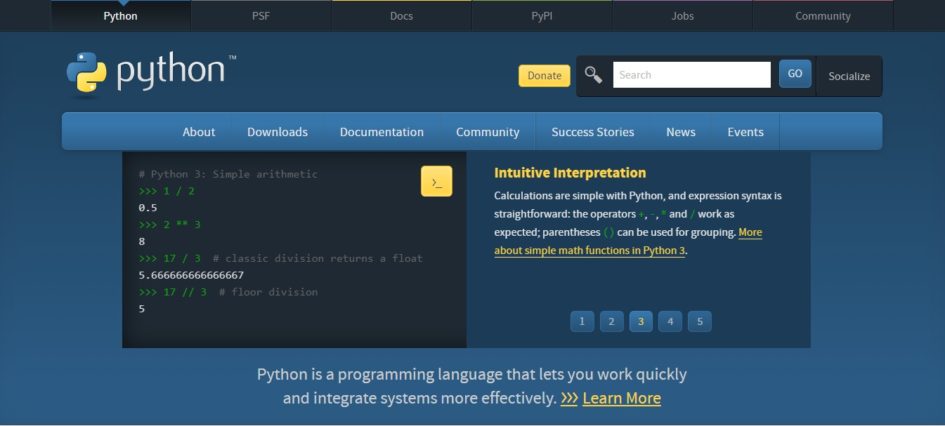
This website is suitable for both beginners as well as advanced level programmers for learning Python. It has online tutorials that are free, and you can find all the official documentation of Python as well.
On this website, you can easily find tons of references and other materials that will help you in grasping all the essentials of Python language. From the basic concepts to the more advanced topics are all included. On Python.org, you can begin with some of the important topics like PEP or Python Enhanced Proposals, Generators and Iterators, and Mutable and Immutable objects.
2. Invent with Python
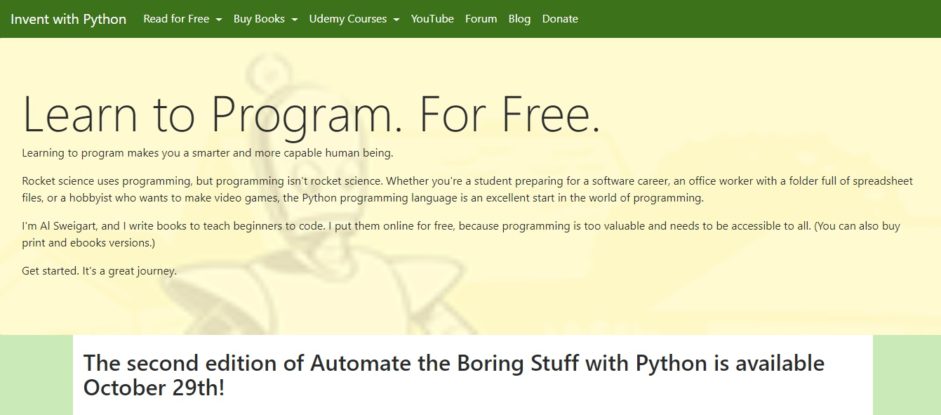
It is another free online tutorial that will help you in learning Python language and is best suited for beginners. Upon completing each chapter or section or concept, you will be bombarded with tests for checking your skills. This website also helps you create your own game using Python with the help of the book “Invent Your Own Computer Games with Python”.
Key topics that this website covers are OOP or object-oriented programming in Python, functional programming in Python and getter along with the setter in Python.
3. Google’s Python Class E-Book

Often many students get confused in choosing the right resource for learning any language like Java, C++, Ruby or any other, but this website is a one-stop solution for learning Python programming language. It provides free classes to learn the Python and focusses more on theoretical concepts rather than directly starting with practical applications.
All the concepts are presented in an organized manner that will assist you to learn and understand all the concepts of Python. Apart from all these, it also has several videos for the lectures along with a set of practical problems that will test your skills after completing any topics. It covers concepts like strings, sorting, dicts & files and lists.
4. Python Tutor
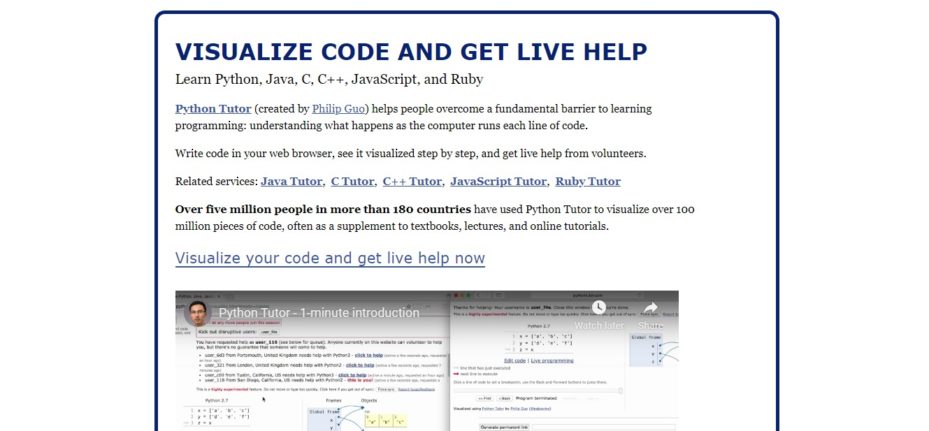
It is also a free learning website that offers a wide range of tutorials for learning the basics of Python. It was created by Philip Guo and offers video tutorials in such a way that all the concepts or topics are easy to understand.
Apart from Python programming, you can also learn other programming languages like JavaScript, Java, C/C++ and Ruby. Some of the key elements that it covers are intro to Python, basics of programming, classes, functions, and objects.
5. Real Python
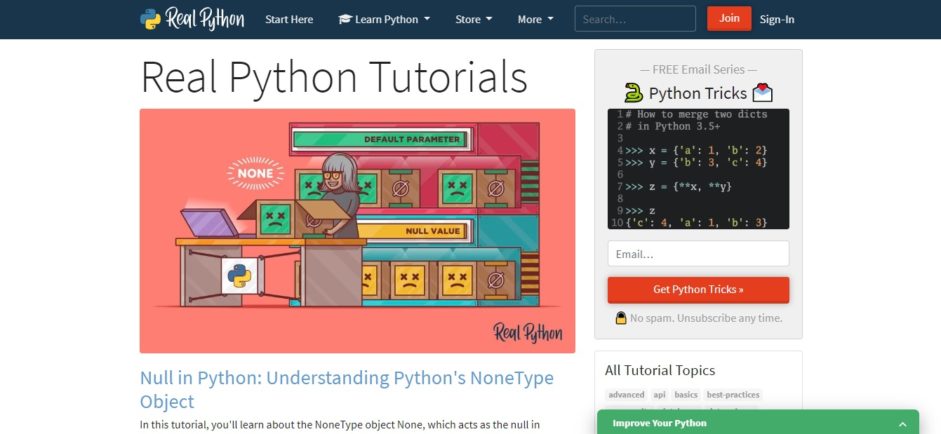
It is one of the top websites for learning various programming languages including Python. On this website, you can get access to over 1000 pages, practice exercise, video tutorials, and various assignments.
You can get access to premium courses from just $60. It covers topics such as reading and writing CSV files, operators and expressions, lists and tuples, and string and character data.
6. Full Stack Python
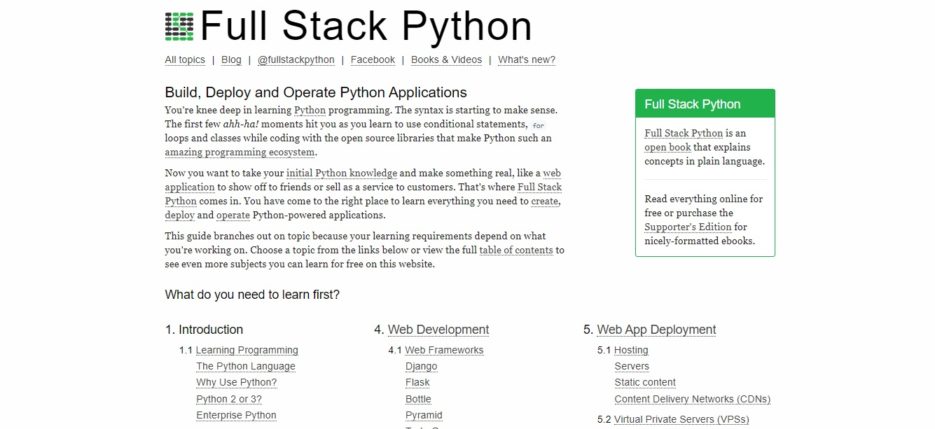
This online platform is also free for its users. Though it provides complete knowledge of Python programming, it is best suited for all the individuals who have some basic knowledge of programming. With all the resources on this website, you will become proficient in Python in no time.
With Full Stack Python, you can learn how to create web apps using Python, you will be able to develop Python-based applications and you will also learn to deploy any application using Python. Essential topics that this website cover are Python programming, web and web app development using Python, development environment and security of the web apps in Python.
7. Eduonix

Eduonix has become one of the pioneers of online learning, especially for technology-related topics like programming, web development, software development, AI, ML, data science and game development. It includes over thousands of online courses including premium E-Degrees that will teach you every concept in detail.
On this website, you can find both free as well as paid online resources from world-class instructors on Python. Apart from this, you can also learn the usage and the implementation of Python programming in AI, ML, Data Science, Game Development and so much more.
8. Python for Beginners

If you are a beginner and are looking for a perfect website that will help you in learning Python for Free then this website will be a perfect resource for you. It is not only a beginner-level guide but here you can also find resources on more advanced concepts and topics. It focuses more on conditional statements, functions & parameters, logical operators and conditional loops.
9. PythonChallenge.com
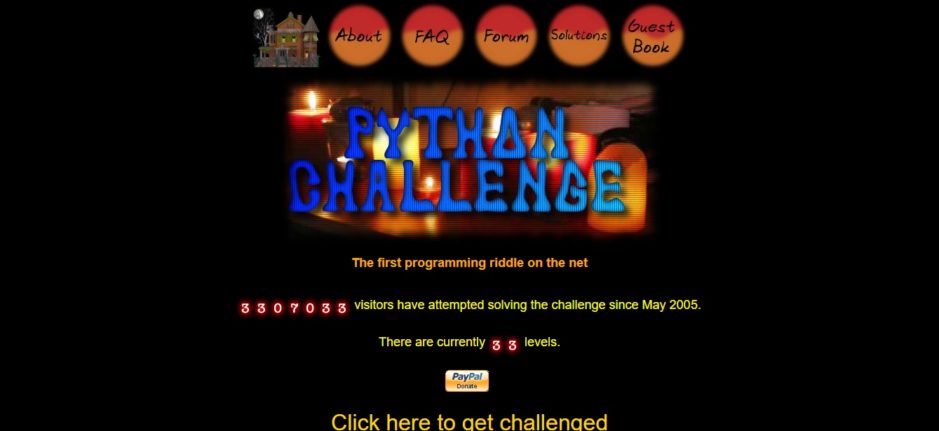
It is one of the most popular websites for exploring Python language in detail. PythonChallenge is one of the best resources for all those who have some experience with Python programming. Here you can polish your existing skills and learn more advanced concepts in a unique and challenging way. The key topics that it covers are exercises, functions and advanced uses of decorators.
Read More: Top Python Blogs That You Should Start Following Right Away!!
Best Books To Learn Python Programming
Here, we will be covering some of the top books that are currently available for learning Python in the best way possible. The listed books will be suitable for everyone from kids to beginners to intermediate to advanced programmers.
Python Books for Kids
I have listed the top two books that are beneficial for all the individuals who want to teach Python programming to the kids. Both books are suitable for kids from the age of 9 or 10, and apart from kids, it will also help you learn Python along the way.
1. Python for Kids: A Playful Introduction to Programming
– Jason R. Briggs

It is a fun book for all age groups and provides a clear picture of Python programming. All the examples in this book are straight to the point and are clearly presented for a better understanding.
This book unfolds with the installation and set-up of Python in your system (for Windows, Linux, and OS X), and then teaches you about Python shell and how it can be used for creating a simple calculator by introducing basic concepts like arithmetic operation and variables. Afterward, it takes you through strings, lists, dictionaries, and tuples.
Later, it teaches you about the Python turtle library and its use in Turtle graphics along with loops, conditional statements, functions, and modules. Objects and classes are covered too, and these all are followed by Python’s built-in functions along with important modules and Python libraries. All of these are presented in the first part of the book and is good for learning to program in Python.
The second part of more on Python-based fun projects like building a single-player version of a game called “Bounce” and building a side-scrolling game called “Mr. Stickman Races for Exits”. The first project is useful for implementing concepts like classes, functions and control flow with creating an interface, performing geometric calculations and using event bindings. While the 2nd project again applies the same concepts of the 1st project but with greater detail and complexity.
2. Teach Your Kids to Code: A Parent-Friendly Guide to Python Programming
– Bryson Payne
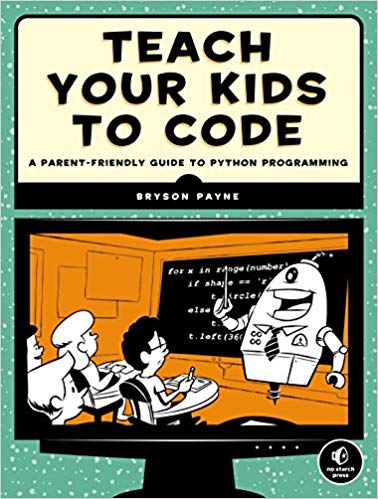
It is similar to the “Python for Kids” but is more focused on an adult who wants to teach a kid to learn to code. One of the major attractions of this book is its use of illustrations and colors on almost every single page. It is well-written and presented, and helps children to learn code with problem-solving skills.
Just like the previous book, it also unfolds with the Python installation and then goes into turtle graphics along with the basic introductions of the Python. After this, it explains to you about variables, calculation, strings and mathematics behind Python. Till now, all the code explanations will have become very clear with explicit details.
Afterward, other concepts like lists, loops, conditional expressions, Boolean logic, operators and library are introduced. Once you are cleared with all these concepts, then it will teach you to implement everything for creating different games like rolling dice, Yahtzee and War.
Later, more advanced graphics, functions, and UI are thought, and then you will use PyGame for creating more advanced animations and graphics.
Best Intermediate & Advanced Books for Learning Python
Understanding Python is one thing but knowing every aspect of Python takes practice. Any of the books mentioned below will give you a complete overview of Python programming from the very basics to a deeper understanding of the advanced concepts.
1. Head-First Python, 2nd edition
– Paul Barry (O’Reilly, 2016)
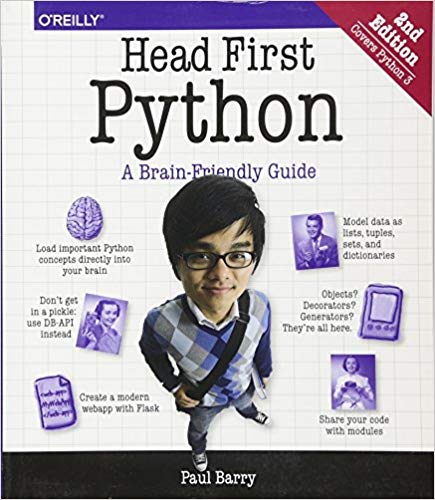
You will hardly find anyone who is not a fan of the Head-First Series. All the books from this series are way different than others, and Head-First Python is no exception. Though all of them are a little lighter in terms of content, but it is more user-friendly than any other books for learning programming.
It suits anyone who shows fascination in learning things in a small, contained manner along with exclusive illustrations and concrete examples for showing the concepts. This book is the result of all the latest research in cognitive science and learning behavior. Because of this, it uses a visually rich format instead of a text-heavy approach that engages your mind more effectively.
Apart from all the illustrations and examples, it also includes all the tidbits of programming that make it a reader-friendly book. Head-First Python unfolds with the lists usage and its manipulation along with all the modules, file handling, and error.
After all these things and a few projects, it will teach you to use an Android application for interacting with the website. Furthermore, it will let you explore wrangle data, handle user input along with scaling and deploying any Python application on the web.
Some might argue that this book is not as comprehensive as others mentioned in this list, but Head-First Python covers several tasks related to Python that are effective, accessible and painless.
2. Learn Python 3- The Hard Way
– Zed A. Shaw

It is one of the classics for learning the Python programming language. As the title suggests, you will learn Python with this book in a hard way, meaning that you have to type all the code by yourself, you have to find your own solutions for the problems that you will face, and you will have to do all the exercises on your own.
One thing that I liked the most about this book is the way all the content is organized and presented. It is just mesmerizing for all the readers. Each chapter is clearly introduced along with concise, to the point and well-constructed code examples. In this book, the biggest risk I found was the typographical errors. Upon completing this book, you’ll definitely become an advanced Python developer overcoming all your Python-related problems.
If the title of this book is giving you the second thought, then trust me, it is actually quite opposite. It is quite easy if you are thinking about the long run. Today, most of us don’t like to type but actually, this is what programming is all about; and this book helps you to get used to it from the very beginning. Another advantage of this book is that it has passed modified through several editions.
Learn Python the Hard Way is also packed with over fifty exercises that focus on all the essential concepts of Python programming along with all the new features of the Python. From the beginning, you will learn the basic set-up, writing simple programs, variables, logic, loops, data types, debugging, functions, inheritance, object-oriented programming, dictionaries, and packaging.
This book also teaches you to create a simple game using a game engine with Python. Later sections are dedicated to lpthw.web package, automated testing and the lexical scanning on user input for parsing sentences.
3. Python Tricks: A Buffet of Awesome Python Features
– Dan Bader
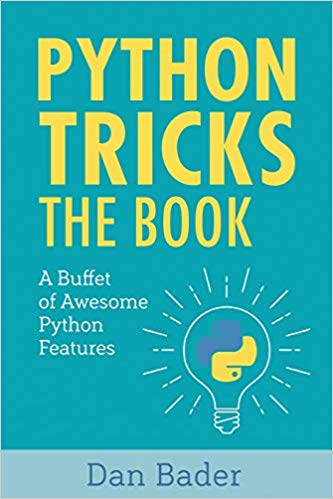
Python Tricks will be a perfect book for you if you are looking for more valuable lesser-known features of Python language along with all best practices. It is written to help you understand all the advanced concepts of Python.
This book has 43 subsections dedicated to different concepts and includes easy-to-digest code examples along with discussions. It covers concepts like:
- Effective functions
- Looping & iterations
- Classes & OOP
- Patterns for cleaner Python
- Dictionary tricks
- Common data structures
- Pythonic productivity techniques
4. Python Cookbook, 3rd Edition
– David Beazley & Brian K. Jones (O’Reilly, 2013)
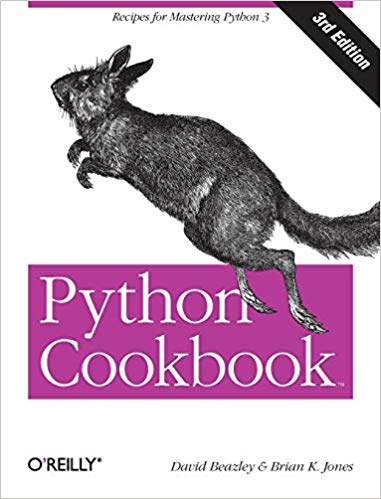
One thing that separates this book from all other books is the level of detail it covers. Typically all the Code Cookbooks are sweet and short manuals that illustrate the slick ways of doing regular everyday tasks. In this Cookbook, each recipe of Python has an extended code solution along with the author of some particular elements of the solution.
Every single recipe in this book starts with a clear problem statement, then it jumps into a solution that uses more idiomatic code for Python 3, data structures and patterns. Because of the many sophisticated and involved examples, I have found this book as one of the most advanced Python books on this list. Despite this, even if you are a beginner level Python programmer, then also you will find it useful.
There are high chances that you will confront some of the code blocks that you will not be able to completely understand, however, after re-reading some of the sections, it will become easy to understand. The majority of its chapters are very straightforward and as it will progress, it will become more intense and sophisticated. The 2nd half of this book revolves more around closures, designs like decorator patterns, callback functions, and accessor functions.
5. Fluent Python: Clear, Concise, and Effective Programming
– Luciano Ramalho
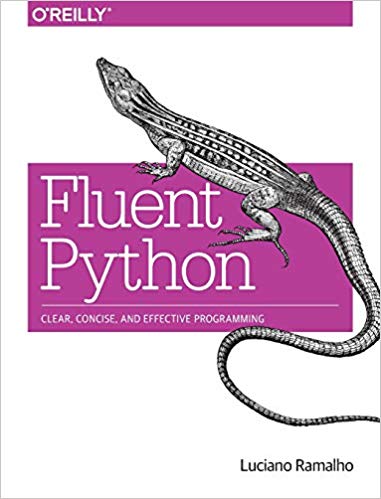
This book is dedicated to all the experienced Python 2 programmers who want to polish their skills for Python 3. It is perfect to have a solid foundation for Python 2 & Python 3 programming languages. It will take your skills to the next level by teaching you all the concepts in detail.
As it consists of several references, if you are a pro programmer of any other programming language, then this book will work for you as well. Every topic is organized in separate sections and can be consumed independently. Though some of its topics can be easily found in other introductory books, in this book, all these topics are mentioned in more detail. This highlights some of the more overlooked and nuanced features of Python language.
The book is divided into 6 sections that include:
- The prologue introduces the OOP of Python along with the special methods that are required to keep libraries of Python consistent.
- Data structures covering mappings, sequences, sets and the difference between str and bytes.
- Functions as objects for explaining the consequences of functions.
- Object-oriented Idioms including mutability, multiple inheritances, operators, references, instances and operator overloading.
- The control flow for extending beyond the basic conditionals. It also covers the concept of context managers, coroutines, generators, concurrency using asyncio and yield from syntax.
- Metaprogramming for exploring the lesser-known aspects of classes, attribute descriptors, metaclasses, dynamic attributes and properties and class decorators.
6. Effective Python: 59 Ways to Write Better Python
– Brett Slatkin
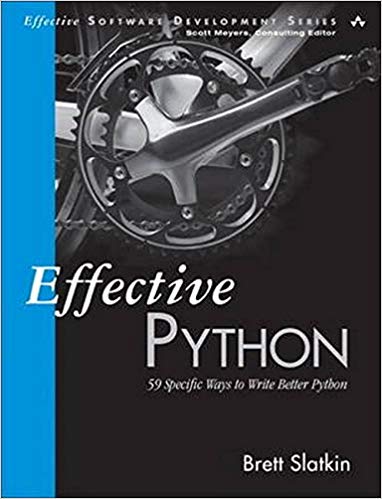
It is a unique book having a collection of 59 articles that are independent of each other and helps in building a basic understanding of Python along with the lesser-known functionalities, built-in tools, and best practices. It unfolds with the simple topic of the different versions of Python and then takes you through more complicated and typically ignored concepts of identifying memory leaks.
Moreover, each of the articles is a combination of discussion, exclusive code examples and a list of things to remember. Since all the articles are independent, it allows you to jump on and focus on the more applicable or interesting topics among all making it perfect for reading any article at a time. Another best part is that each article is around 2 – 4 pages long which makes it perfect for you to read and grasp each article a day.
All the articles are grouped into 8 sections or chapters. These are:
- Pythonic thinking that will introduce all the proven ways for performing common tasks while implementing Python.
- Functions for clarifying all the nuanced differences of Python functions. It also outlines how to use functions to promote reuse, clarify intention and reduce bugs.
- Classes and Inheritance for outlining the top practices while working with Python classes.
- Metaclasses and Attributes for illuminating the mysterious topic of metaclasses. It teaches you how to use metaclasses for creating intuitive functionality.
- Concurrency and Parallelism for explaining how to write multi-threaded applications using Python.
- Built-in Modules introduce you to all the lesser-known built-in Python libraries that will make your code more reliable and useful.
- The collaboration section focuses more on packaging, official documentation, virtual environments, and dependency.
- Production covers the essential topics like testing, debugging, memory management and optimization.
7. Think Python: How to Think Like a Computer Scientist, 2nd edition
– Allen B. Downey (O’Reilly, 2015)

This book authored by A. B. Downey takes a more serious route for teaching Python programming language. It was created with the aim of teaching all the programmers to think about coding and trust me, it does a perfect job. When you will compare this one to other books, then it is organized in a more linear way and focuses on everything that is required to learn about basic Python programming.
Though all the concepts are very clear, straightforward and explained in a comprehensive way, it doesn’t go much into the advanced topics of Python programming. Instead, it covers a wide range of topics that any other books have not failed to cover. These topics are polymorphism, mutability vs immutability, operator overloading and analysis of algorithms.
Its initial versions have fewer exercises, but the latest version has been corrected significantly. Moreover, this book also includes 4 reasonably in-depth exercises related to other applications.
8. Python Crash Course
– Eric Matthes

It does complete justice to its title by giving you a complete crash course on Python programming. It begins with the basics of Python programming such as data structures, elements, strings, variables, numbers, lists, tuples, and others.
After these, more advanced concepts like if statements, logical tests, and dictionaries are covers. All of these are then followed by functions, user input, while loops, file handling along with debugging and code testing. And all of these are just the part of 1st section of the book.
The real fun begins in the 2nd section of the book where you are required to work on 3 important projects or fun applications such as Alien Invasion Game, Data Visualization and creating a complete web application.
The first project that is basically a Space Invader game is developed with the use of pygame package. In this, you have to design a ship using classes. After this, you have to program to pilot it and make it fire bullets. Afterward, you will design several types of aliens, make the fleet of aliens move, and also make it possible to shoot them. At last, you will create a scoreboard in which the one with the highest scores will complete the game.
In the 2nd project, there is a task of data visualization using matplotlib, rolling dice, a little bit of statistical analysis, random walks, and creating graphs or charts. For this, you are required to use pygal package. This will help you learn the right way to download the data in several formats, importing the data into Python and then visualizing the result. You will also learn to interact with web APIs for visualizing or retrieving data from HackerNews and GitHub.
The third and final project will teach you to create a web application by using Django. In this, you have to set up a learning log for tracking all the things that users have been studying so far. It will teach you to set up a project along with the installation of Django, creating an admin interface, designing your models, access controls, setting-up user accounts, customizing your application with Bootstrap and then deploying it to Heroku.
Read More: Best Python IDE & Code Editors For Python Developers- 2020
Begin Python Coding Now!
With all the information listed above, I will conclude this list of best resources to learn Python programming. It covered some of the top resources from online websites to the most popular books for learning Python.
Python may be a simple and easy language but learning Python is a never-ending process. This language is so vast that it can be used for almost anything in the current world. For this, I have tried to cover some of the best resources such as websites having both Free as well as premium content along with all the books.
The books mentioned above vary as per the way of teaching and I am sure that some or other will definitely meet your learning requirements. After all this, one thing of which I am sure is that no matter whether you are a newbie looking to dive into the world of Python programming or the Python programmer searching for the right resource to polish your skills, definitely you will find some of the above-mentioned resource helpful.
People Are Also Reading:
- Why is Python Programming Language So Popular Among Programmers?
- Python vs JavaScript: The Competition Of The Giants!
- Why Python May Rule The Marketing World Soon?
- Why Python Is So Essential For Machine Learning?
- Best Python IDE & Code Editors For Python Developers

